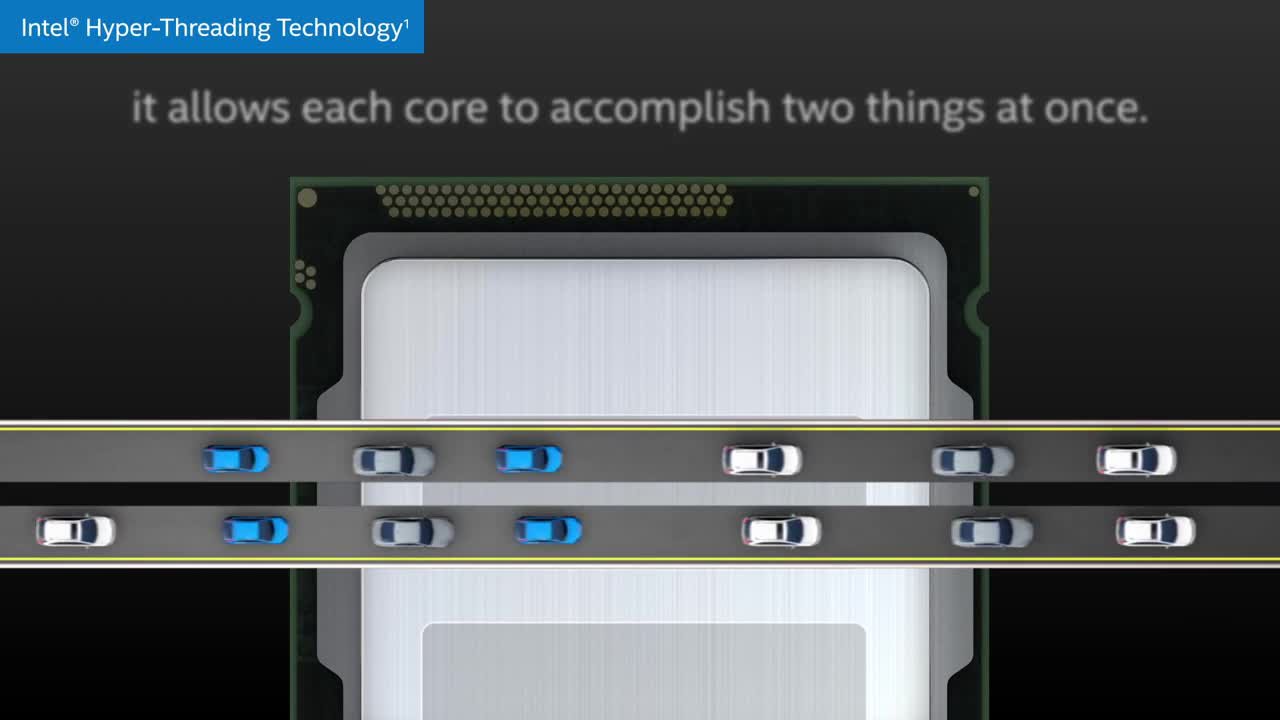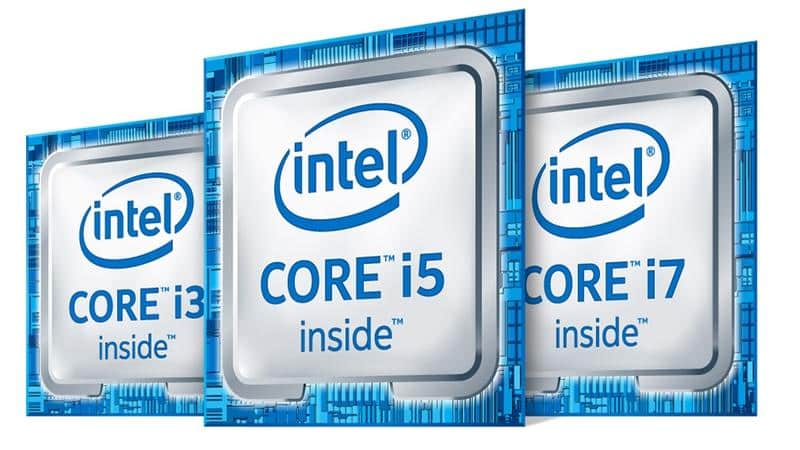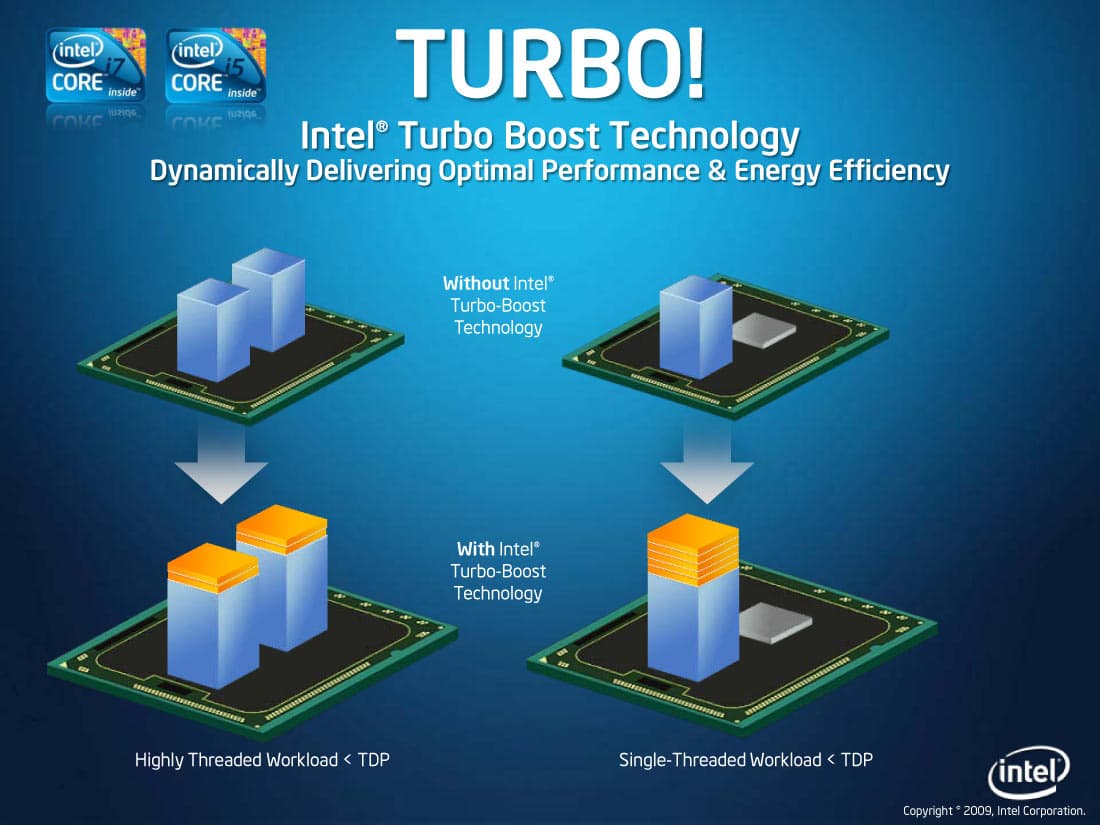Intel’s naming scheme for its processors can confuse a new user rather easily. Without going into the Pentium and other names such as Core M, let’s only talk about Intel’s i3, i5, and i7 lines of processors. According to the naming scheme, you can naturally guess that an i5 is better than an i3, and an i7 is better than an i5. That is true, in theory, but practically, you might find that an i3 is the best one for you. There are key differences between Intel Core i3, i5, i7, and i9 processors. However, Intel mainly uses these names to categorize its processors based on price and performance.
- i9: Flagship
- i7: High-end
- i5: Mainstream
- i3: Entry-level
Intel Core i3 vs i5 vs i7 vs i9 – The Difference
The main differences between a Core i3, i5, and i7 are the number of cores, hyperthreading, and turbo-boosting (or lack thereof), cache size, and clock speed. Before you draw any conclusions, i3, i5, and i7 don’t have 3, 5, and 7 cores, respectively. Those numbers represent the relative level of processing power compared to one another. Furthermore, there is a difference between desktop CPUs and mobile CPUs used in laptops. So, a desktop i5 may not be the same as the mobile i5 on your laptop.
Cores
Core i3 processors have the lowest core count, which shouldn’t come as a surprise. These processors are dual-core but support Intel’s hyperthreading technology, which we will discuss. Coming onto i5, these can be quad-core, but there are also dual-core variants. When you consider mobile i5 CPUs such as those used in a laptop or an ultrabook. If you’re talking about a desktop CPU, most i5 CPUs are quad-core, except in a rare case here or there. But don’t worry, there is an easy way to figure out how many cores a processor has, and we’ll talk about that too.
Even though some i5 processors are dual-core, they will outperform an i3 dual-core thanks to Turbo-boosting. More on that later. Similarly, all desktop i7 CPUs are quad-core, at the very least. Some extreme versions can have six or eight cores, but hardly any applications utilize more than four. You can learn more about processor cores in our dedicated article explaining the difference between dual-core and quad-core.
Hyperthreading

In layman’s terms, hyperthreading is a technology that lets a single physical core act like two cores, thus improving multitasking without activating another core. This helps deliver more performance per physical core while also saving power. With hyperthreading, your dual-core Intel i3 will perform better than any normal dual-core processor, especially when multitasking. If you’re good at math, you may have figured out that hyperthreading creates four cores out of the two available cores. And that’s true here, but these are four virtual cores, not real, physical cores.
When it comes to it, a quad-core processor (one with four physical cores) will always outperform an i3 with four virtual cores. This is an important piece of information because i5 processors, which are generally quad-core, lack hyperthreading. So, if a quad-core does perform better than a dual-core with hyperthreading, why not add hyperthreading to a quad-core and further increase performance?
That’s where the i7 comes in. These support hyperthreading on top of the actual four cores that they have, and thus provide an edge over the i5 line of processors.
Turbo Boost
Inter’s Turbo Boost technology lets a processor increase its clock speed when the need arises. This increase in speed is not set in stone and is, in fact, dynamic, depending on the situation. Turbo Boost depends on the number of active cores, the estimated current consumption, power consumption, and processor temperature. It operates in 133 MHz increments and will scale up if needed. The clock speed increases until it reaches the Turbo Boost limit or the processor temperature reaches its maximum thermal design power. In essence, the thermal design power of TDP is the temperature at which a processor can safely operate.
For example, the Core i5 750 has a base clock speed of 2.66GHz but has a maximum Turbo Boost speed of 3.2GHz. So when needed, the clock speed will be boosted up to 3.2 GHz automatically. Intel still categorizes the processor with the base clock speed because this is the actual clock speed the processor will perform most of the time. Turbo Boost kicks in only when necessary, that is, under load, and hardly ever reaches the maximum capacity. That’s not to say it can’t be under the right load.
i3 processors don’t support Turbo Boost, while both i5 and i7 do.
Other differences
The cache is a processor’s RAM, and it can greatly affect performance. Just like normal RAM, when it comes to cache size, the more the merrier is the rule. The Core i3 series typically has up to 3 MB of cache. The Core i5 has between 3 to 6 MB of cache, while the Core i7 series has between 4 MB and 8 MB. Integrated graphics are okay, but if you want to use graphics-intensive applications or play games, it is always best to have a dedicated GPU.
Here’s a quick look at all the major differences we have covered and skipped so far.
| Frequency | Turbo Boost | Cores | Hyperthreading | Smart Cache | TDP | Graphics | |
| Core i9 | 3.3-4.3GHz | Yes | 2-4 | Yes | 13.75M | 140 W | Intel HD 7900X |
| Core i7 | 2.0-3.5GHz | Yes | 2-4 | Yes | 8MB | 35-84W | Intel HD 4600 |
| Core i5 | 3.0-3.4GHz | Yes | 2-4 | No | 4-6MB | 35-84W | Intel HD 4600 |
| Core i3 | 2.4-3.6GHz | No | 2 | Yes | 3-4MB | 35-54W | Varies (Low) |
Understanding the Intel naming scheme
Typically, you will find that there is a pattern to how Intel processors are named. You have probably heard of the third, fifth, or seventh “generation” of chipsets. To best understand these, think of them like your Samsung Galaxy or whatever smartphone you have. There are different series of Samsung Galaxy smartphones for different price segments. The J series is for budget-oriented users, the A series or C series for the mid-range, and the S or the Note series for high-end. Each year, the company launches a new smartphone and names it a J5 or an S8, depending on where it falls in the price segment.
The numbers
Intel launches its newer processors in three pre-defined categories, which it has named i3 (budget-range), i5 (mid-range), and i7 (high-end). Just as the 8 in Samsung Galaxy S8 signifies the eighth version or generation of the Galaxy S smartphones, Intel processors use a number to signify the generation of the processor. Let’s take the Intel Core i5 7400 and Core i5 7500, for example. You can figure out that the 7500 has to be better than the 7400, but how? You already know what to expect from a Core i5; the number 7 represents the generation. So both the i5 7400 and i5 7500 are 7th-gen processors. The numbers 400 and 500 are Intel’s internal assessment of how a processor compares to other processors in the line. So the i5 7500 is better than the i5 7400.
The letters
Some Intel processors also have letters in their names after the numerical part, for example, Intel Core i7 6920HQ. Following the naming scheme, you can figure out it’s a 6th-gen processor, but what’s with the HQ? It’s not a rule that you’ll always find two letters after the numerical part, but here’s what those letters mean.
- U (Ultra Low Power): The U rating is only for laptop processors since laptops and ultrabooks have to be power efficient.
- Y (Low Power): Also power saving, but not as good as those marked U. These are typically found on older generation laptops and mobile processors.
- T (Power Optimized): Optimized to consume less power, but for desktop processors.
- Q (Quad-Core): As we said before, identifying if the i5 or i7 is quad-core is easy. Just look for a Q in the name.
- H (High-Performance Graphics): The chipset has one of Intel’s better graphics units.
- K (Unlocked): This means you can overclock the processor above its rating (although that can be harmful).
That’s all about the difference between Intel Core i3 vs i5 vs i7 vs i9 processors.



